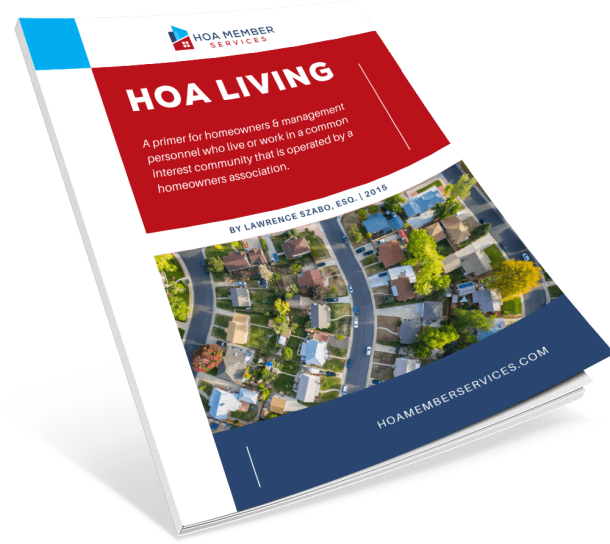Every community runs on decisions. Some are small, like whether to repaint the clubhouse. Others are bigger, like electing the very board that shapes the future of the neighborhood.
In homeowner associations, those decisions all flow through one channel: the vote.
Voting might sound straightforward, but in an HOA, it’s wrapped in layers of rules, procedures, and state laws that can feel overwhelming. Who gets to cast a ballot? What happens if there’s no quorum? Can technology replace paper proxies?
These aren’t abstract questions; they’re the daily mechanics that decide how your community operates.
In this guide, we’ll strip away the legal fog and explain HOA voting rules in plain language. From the basics of how votes work to the latest reforms and state-specific laws, you’ll learn what really matters.
By the end, you’ll not only understand the rules but also know how they protect fairness, transparency, and your rights as a homeowner.

What Do HOA Voting Rules Usually Cover?
When people hear “HOA voting rules,” they often picture nothing more than raising a hand at a meeting. In reality, the rules go much deeper, shaping how power moves through a community.
They decide who can cast a ballot, when votes are valid, and what kinds of issues require approval from homeowners versus the board.
Who Gets to Vote?
In most associations, every lot or unit owner has one vote. Renters or tenants generally don’t, unless the governing documents specifically allow it. Proxies may also come into play, letting someone authorize another person to vote on their behalf.
Some states restrict how many proxies one person can hold to prevent power from concentrating unfairly.
What Types of Votes Happen?
Not all votes are the same. Common categories include:
- Board elections: Choosing the directors who guide policy and spending.
- Budget approvals: Deciding whether to fund reserves or raise dues.
- Document changes: Amending covenants, conditions, and restrictions (CC&Rs).
- Special issues: Projects, loans, or changes to amenities.
Why Do Rules Matter?
Voting is about legitimacy. Without clear procedures, decisions can be challenged or even overturned in court. Most states apply corporate governance principles to HOAs, meaning the association is expected to operate like a nonprofit corporation.
The Role of Governing Documents
Each HOA has its own declaration, bylaws, and rules. Together, these spell out:
- How often meetings must be held.
- Notice requirements before a vote.
- Minimum turnout (quorum) for a valid decision.
- Procedures for recounts or tie-breaking.
Understanding these basics lays the groundwork for diving into more specific areas, such as HOA board voting rules, state-by-state differences, and what happens when disputes arise.

How Do HOA Board Voting Rules Differ from Member Voting Rules?
It’s easy to blur the lines between homeowner votes and board votes, but the distinction is critical. Think of it this way: homeowners set the big picture, while the board manages the day-to-day.
Both rely on formal rules to stay legitimate, but the scope and process often look very different.
Board Voting Rules
When people talk about the HOA board voting rules, they’re referring to how directors on the board make decisions once elected. Common examples include:
- Quorum requirements: A minimum number of directors must be present to conduct business.
- Majority vs. supermajority: Some decisions need more than a simple majority, especially financial ones.
- Meeting procedures: Many states require open meetings so homeowners can observe.
Board votes are about administration: approving contracts, enforcing covenants, or responding to homeowner complaints.
Member Voting Rules
Homeowner votes, by contrast, cover the community’s direction. Members might approve annual budgets, elect new directors, or amend governing documents. While the board has authority to manage operations, members hold the ultimate power to replace the board or change the rules.
- Weighted voting: Some associations assign votes per lot, not per person.
- Proxies and absentee ballots: Rules determine whether homeowners can delegate their vote or submit it in advance.
- Statutory defaults: If governing documents are silent, state law steps in.
Why the Split Matters
Understanding this split prevents confusion. A homeowner may expect to weigh in on every landscaping contract, but that’s board business. Similarly, a board can’t unilaterally rewrite bylaws; that’s reserved for the membership.
Clear boundaries keep governance balanced: the board handles operations, while homeowners steer the overall course.
What Are the Most Common HOA Voting Procedures?
Even when everyone agrees that votes should be fair, the actual mechanics of how voting happens can be surprisingly complex. That’s why HOA voting rules go beyond who can vote and dig into the procedures that make results valid.
Ballots and Formats
HOAs typically use one of three formats:
- Written ballots: Standard for board elections and budget approvals.
- Electronic ballots: Growing in popularity, but must comply with state statutes on verification.
- Secret ballots: Required in some states for contested elections to prevent intimidation.
Each method comes with specific rules for notice, distribution, and collection. Some states even require a certain amount of advance notice before ballots are mailed out, ensuring every member has a fair chance to participate.
Absentee Voting and Proxies
Homeowners can’t always make it to a meeting, so procedures often allow for absentee ballots or proxies. Proxies authorize another member to vote on someone’s behalf.
However, state laws may limit proxy use to reduce the risk of abuse. For instance, some jurisdictions restrict the number of proxies one person can hold, while others ban them outright for board elections.
In electronic voting, digital proxies are sometimes treated differently, with authentication safeguards required.
Counting and Certification
Votes don’t end when the ballots are collected. Associations must follow clear counting and certification steps to avoid disputes. This usually involves:
- Appointing independent inspectors of election.
- Keeping records for a specified period.
- Announcing results within a set timeframe.
- Allowing members to review election materials if permitted by law.
Why Procedures Matter
If procedures are sloppy, the outcome can be challenged in court or nullified entirely. States like California and Florida have codified election procedures to safeguard transparency.
In short, procedures are the backbone of trust. Without them, even the fairest vote can unravel into conflict.

What Are the New Election Rules for HOAs?
Election rules are not static. Over the last decade, many states have tightened regulations to make HOA elections more transparent and fair.
These new election rules for HOAs reflect growing concern about accountability, especially in communities where small groups have held power for too long.
Transparency and Fairness
Several states now require independent inspectors of election to oversee ballot collection and counting. This prevents boards from policing their own elections.
Some states mandate secret ballots for contested races, ensuring homeowners can vote without fear of retaliation.
Notice and Access
Modern statutes also expand how election notices must be delivered. Email notifications are becoming standard alongside mailed notices, giving owners more consistent access to information.
Rules often set minimum advance notice—sometimes 14 to 30 days—before a vote can be held.
Limits on Proxies
Proxies have long been controversial. New laws in states like North Carolina and Arizona restrict proxy use, especially in board elections, to prevent a single person from controlling outcomes. Instead, absentee ballots or electronic ballots are encouraged.
Embracing Technology
Electronic voting is increasingly recognized, but only when strict verification steps are in place. Digital ballots often require unique identifiers or login credentials.
This trend makes participation easier, but it also raises privacy and security questions that legislatures continue to refine.
Why It Matters
Updated rules give homeowners more confidence that elections are fair and unbiased. Boards must now adapt to stricter compliance requirements, and ignoring them can lead to legal disputes.
The bottom line: election rules evolve, and keeping up with changes is essential for both boards and homeowners.
How Do HOA Voting Rules Differ by State?
While the core idea of voting is universal, the details vary dramatically depending on where your community is located. State laws shape everything from notice periods to ballot handling.
Let’s look at five states that set the tone for HOA governance: Florida, Arizona, North Carolina, California, and Texas.
1. Florida HOA Voting Rules
Florida has some of the most detailed statutes in the country. Under Florida Statutes, Chapter 720, HOAs must follow specific procedures for election notices, quorum, and recall of board members.
Secret ballots are common, and members are entitled to inspect election records. Failing to follow the statute can nullify results and even expose the association to lawsuits.
2. Arizona HOA Voting Rules
Arizona’s laws are governed by Arizona Revised Statutes, Title 33. HOAs here must hold open meetings, and elections are expected to be conducted with ballot security in mind.
Arizona is also one of the states pushing forward with electronic voting, provided that verification and privacy safeguards are in place. Proxies are limited, reflecting the state’s emphasis on direct homeowner participation.
3. North Carolina HOA Voting Rules
The North Carolina Planned Community Act lays out requirements for quorum, notice, and proxy use. NC HOA voting rules generally allow proxies but restrict their use in certain contexts to avoid manipulation.
If bylaws don’t specify voting procedures, the Act supplies default rules, ensuring communities always have a legal framework to follow.
4. California HOA Voting Rules
California’s Davis–Stirling Act is widely regarded as one of the strictest HOA legal frameworks in the country. It requires secret ballots for board elections, independent inspectors of election, and clear timelines for ballot distribution.
California also mandates member access to election records and imposes penalties for boards that fail to comply. These detailed rules often serve as a model for reforms in other states.
5. Texas HOA Voting Rules
Texas is home to one of the largest HOA populations in the US, and its laws reflect that scale. The Texas Property Code requires associations to provide open board meetings, written ballot options, and disclosures about voting rights.
HOAs must also adopt election procedures that align with state standards, including clear notice requirements and accessible voting methods.
Why State Law Always Wins
No matter how detailed your governing documents are, state law takes precedence. If bylaws conflict with statutes, courts will enforce the statute. That’s why understanding both local laws and your HOA’s documents is critical.
State differences may seem small, but they affect how homeowners engage in elections, how boards handle disputes, and ultimately how communities maintain trust. Knowing your state’s rules helps prevent costly mistakes and ensures every vote counts.

What Challenges and Disputes Arise in HOA Elections?
Even when HOA voting rules are clearly written, carrying them out isn’t always smooth. Disputes often center on how ballots are handled, whether meetings follow proper procedure, and if the results reflect the true will of the community.
Meeting Quorum Problems
Quorum is the minimum number of members who must participate for a vote to count. If a quorum isn’t met, the election can’t move forward, leaving boards stuck with vacancies or budgets unapproved.
Many states have fallback rules, like reduced quorum thresholds, but these vary and must be applied carefully. Low turnout is one of the most consistent hurdles HOAs face.
Ballot Irregularities
Another common challenge arises with ballots — ballots not distributed properly, missing signatures, or ballots counted without proper oversight. Some states, like California, under the Davis–Stirling Act, now require independent inspectors of election to certify results and maintain ballot security.
These safeguards aim to prevent disputes, but when they’re ignored, the entire process may be invalidated.
Proxy Conflicts
Proxies allow one member to vote on behalf of another, but they’re also a flashpoint for disputes. Allegations of proxy manipulation — too many held by one person, or unclear instructions — regularly lead to challenges. States such as Arizona limit proxy use precisely to avoid this type of controversy.
Homeowner Rights to Challenge Results
If members believe rules weren’t followed, they may have the right to challenge the outcome. In many jurisdictions, homeowners can review election records, demand recounts, or even seek court intervention.
The North Carolina Planned Community Act, for example, spells out member rights when procedures aren’t followed.
These disputes highlight why precise voting rules matter. Without structure, the legitimacy of decisions crumbles, leaving communities divided and boards exposed to legal risk. Clear, enforceable procedures help minimize uncertainty and preserve trust.
Rights and Responsibilities of Homeowners Under HOA Voting Rules
Every HOA voting process depends on clear rules about what homeowners can and cannot do. These rules aren’t just technicalities; they set the ground for fairness and ensure every voice has the chance to be heard.
Rights Defined by Rules
State statutes and governing documents usually spell out homeowner rights in elections, including:
- Right to notice: Rules require members to be notified in advance, often 10 to 30 days before an election. Without proper notice, the vote can be challenged.
- Right to access ballots and records: Many voting rules guarantee that homeowners can inspect election results and even request recounts.
- Right to equal treatment: One unit, one vote is the standard unless documents specify weighted voting. Rules prevent boards from giving preference to certain owners.
- Right to challenge outcomes: If voting procedures aren’t followed, homeowners can dispute results under statutory frameworks like the North Carolina Planned Community Act.
Responsibilities Under the Rules
Rules don’t stop at rights; they also assign obligations. Homeowners must:
- Follow proxy procedures: If proxies are allowed, they must comply with the limits set by law or bylaws.
- Meet deadlines: Absentee or electronic ballots must be submitted by the cutoff date; late votes are invalid.
- Abide by quorum requirements: Members are expected to participate so elections reach valid thresholds.
- Respect eligibility rules: Voting privileges may be suspended for unpaid dues, depending on state law and governing documents.
Why It Matters
By defining both rights and responsibilities, voting rules make HOA elections more predictable and enforceable. When homeowners understand these boundaries, disputes are reduced and results hold stronger legitimacy.
Ultimately, the rules exist not just to regulate but to safeguard fairness, accountability, and the stability of the entire community.

What Are the Best Practices for HOA Boards and Members?
Voting rules only work if both boards and communities apply them consistently. Best practices are about turning statutes and bylaws into reliable, transparent processes that people trust.
For Boards
Boards carry the duty of administering elections fairly under the HOA board voting rules. Key practices include:
- Advance planning: Draft an annual election calendar that accounts for notice periods, ballot preparation, and quorum requirements.
- Clear instructions: Every ballot should explain how to vote, where to return it, and what deadlines apply. Confusing ballots are a recipe for disputes.
- Neutral oversight: Use inspectors of election, or at least volunteers not running for office, to handle ballot counts. Independent oversight adds credibility.
- Public accountability: Announce results promptly at meetings and provide written summaries so there’s no room for rumor or speculation.
For Members as a Collective Body
Rather than individual rights, the focus here is on what members can do collectively to strengthen the system:
- Support bylaw updates: Outdated governing documents may not reflect current statutes. Members should be willing to amend them to align with state laws.
- Encourage participation: Apathy is the biggest threat to valid elections. Members can coordinate outreach efforts, such as reminders, meet-the-candidate sessions, or community forums, to boost voter turnout.
- Accept oversight mechanisms: Independent ballot counting or stricter notice requirements protect everyone, even if they feel inconvenient.
Without these best practices, rules are applied unevenly, which creates suspicion. With them, elections are predictable, disputes are rare, and results carry legitimacy. Consistency and transparency are what transform legal rules into a healthy culture of governance.

The Future of HOA Voting?
Voting rules don’t stay frozen in time. As communities grow and technology evolves, legislatures are reshaping how HOAs conduct elections. The future of HOA voting is likely to blend traditional safeguards with modern tools designed to increase participation and transparency.
Expansion of Electronic Voting
Electronic ballots are already allowed in many states, but adoption is uneven. As more legislatures refine statutes, online voting may become the default method rather than an exception.
Rules will need to clarify authentication, ballot secrecy, and record-keeping to ensure digital elections are as secure as paper ones. States like Arizona and Florida already recognize e-voting under their HOA statutes, signaling broader acceptance.
Greater Transparency Requirements
Future reforms will likely tighten notice and disclosure rules. Legislatures may require boards to publish candidate qualifications, distribute sample ballots, or provide detailed timelines for every election. The goal is to eliminate confusion and prevent boards from controlling information.
Standardized Procedures Across States
Today, rules differ widely by state. In the future, we may see model laws or national best practices influencing state statutes. For example, California’s Davis–Stirling Act has already inspired reforms elsewhere.
Over time, this could lead to more consistent expectations across state lines, reducing confusion for boards and management companies.
Increased Oversight and Accountability
As disputes become more common, states may expand the role of regulatory agencies or ombudsman offices to monitor HOA elections. This could include mandatory reporting of results or penalties for noncompliance.
The U.S. Department of Housing and Urban Development already highlights accountability in housing governance, and HOAs may follow a similar path.
In short, the future of HOA voting rules points toward modernization, standardization, and stronger oversight. Boards and homeowners who adapt early will find elections less contentious, more accessible, and far more trustworthy.
Key Takeaways
Understanding HOA voting rules is essential for anyone living in or managing a community association. These rules determine not only who gets to vote, but how votes are cast, counted, and certified.
They provide structure, prevent disputes, and ensure decisions carry legitimacy. The most important points to remember:
- Notice is mandatory: Members must be informed of elections within the timeframe set by statute or bylaws; without notice, results can be overturned.
- Quorum defines legitimacy: No quorum, no valid election. Reduced quorum rules may apply, but only if allowed by state law.
- Ballots must follow strict rules: Many states require secret ballots, independent inspectors, and detailed record-keeping to protect accuracy.
- Proxy use is limited by law: Some states restrict or prohibit proxies in board elections to prevent vote-stacking.
- State law always controls: Florida Statutes, California’s Davis–Stirling Act, and Texas’s Property Code override conflicting bylaws.
- Electronic voting is expanding: States increasingly allow digital ballots, but only with authentication and privacy safeguards.
Following these rules protects fairness, reduces disputes, and strengthens trust in HOA governance.
Need more clarity for your own HOA? Explore our guides and free resources or become a member for unlimited personal support from an HOA attorney.

